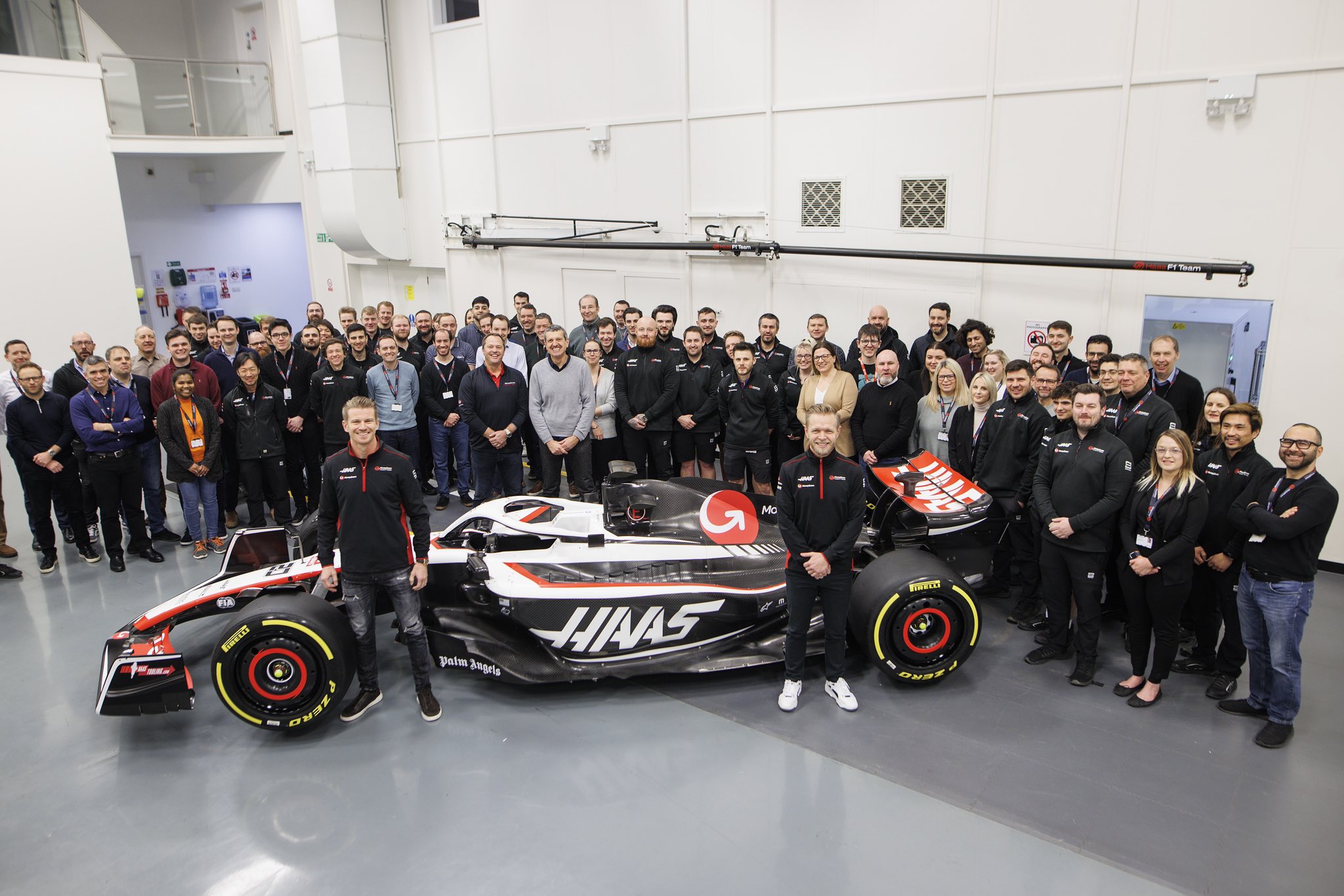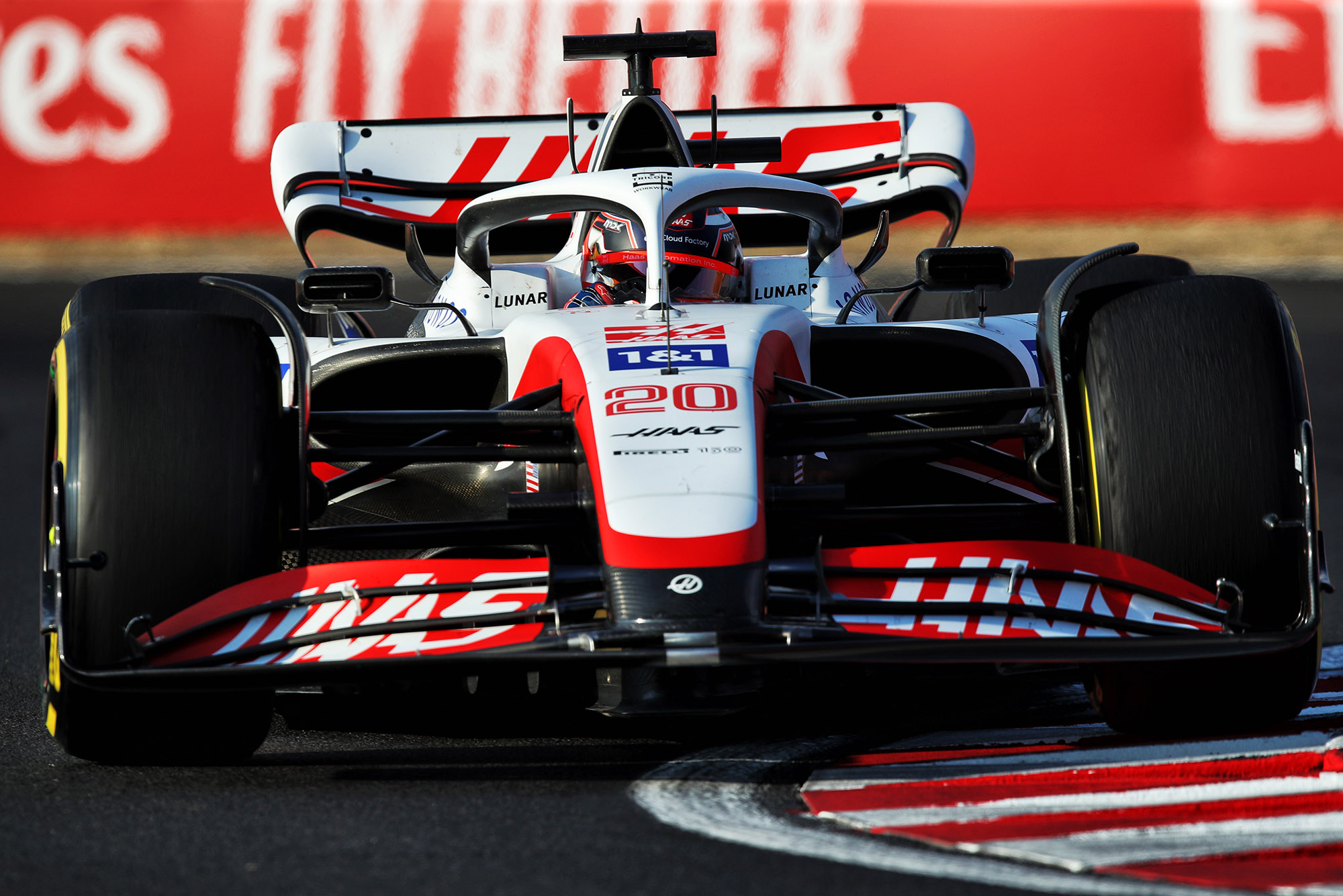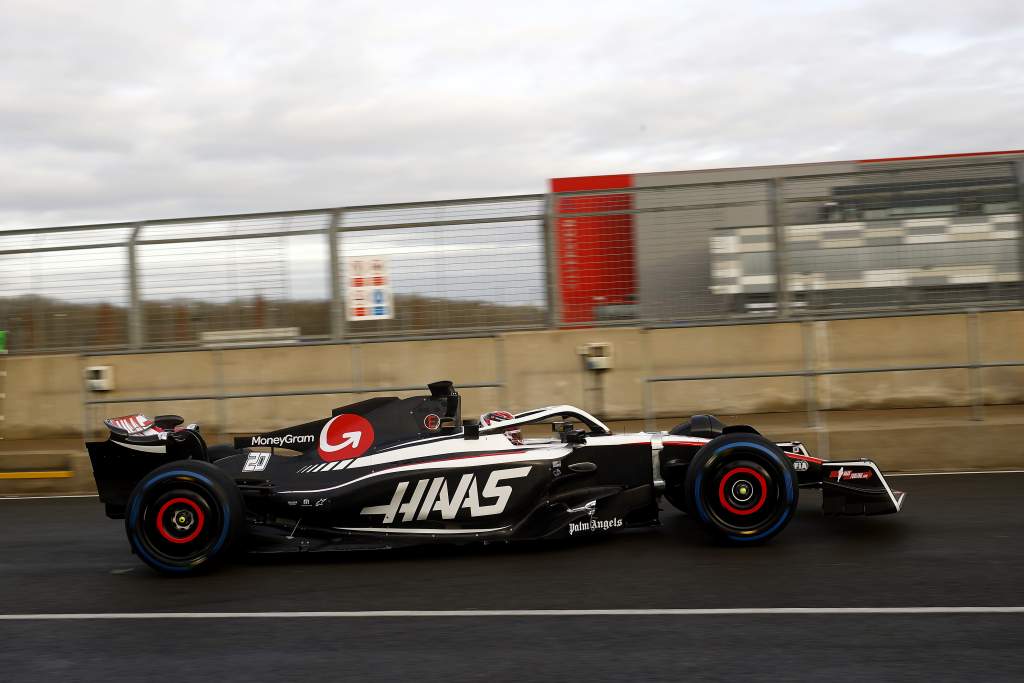Up Next

The first real images of Haas’s VF-23 2023 Formula 1 car give an indication of what the team’s self-described “massive rework” of its 2022 design has prioritised.
Haas completed a shakedown at Silverstone on Saturday, showing its 2023 challenger for the first time after a livery reveal earlier this month.
It has followed the lead of Red Bull by moving both the cooling inlet at the front of the sidepods and the entry to the venturi tunnels back slightly compared to last year.
This means it has sacrificed a little length in the powerful downforce-generating tunnels in the pursuit of consistency, reducing the chances of porpoising.

While the basic shape of the Haas sidepods are similar to the Ferrari-inspired ones used in the second half of last year, there are indications that the various radiators that make up the cooling package have been reconfigured. This would tally with the inlets being moved back, and the sidepods themselves extended further rearwards.
Given Haas uses so many Ferrari components, that could also be a hint that Ferrari is moving in a similar direction with its sidepods.
Technical director Simone Resta believes Haas will be able to address all of the “many lessons” from last year with the VF-23, which is the second car to be developed by Haas’s rejigged technical department that now comprises a design office in Maranello.
Resta says his technical team was “quite a young group” formed over the winter of 2020/2021.
He described the 2023 car as being born from a “better rhythm and better collaboration as a team” and suggested the surface-level changes do not do justice to how different the car is underneath.
“We’re looking at all the main areas of intervention from 2022 to 2023,” says Resta.
“We try to save a few of the components on last season’s car but try to improve the aerodynamic performance of the car, improve the weight of the component and improve the quality of the component.
“There has been a massive rework of the car.
“Some of the components don’t look radically different. It’s probably more a development of the 2022 car.
“But there is a complete rework of the car involving many, many components.”
One of Haas’s limitations in 2022 was a lack of in-season development.

It started the season very brightly, aided by writing off its 2021 season so it could prioritise the new technical rules.
But there was just one major upgrade package for Haas in 2022, first introduced on Kevin Magnussen’s car in Hungary just before the summer break, and it was unable to maintain its early form as a regular points scorer as a result.
Haas scored 34 of its 37 points in the first 11 races – giving it the worst points record of any team in the second half of the season.
It still managed to finish eighth in the constructors’ championship though, its best result since finishing fifth in 2018, which meant an increase in prize money.
Resta has suggested that has been factored into Haas’s budget for 2023 and will give “extra resource” to invest on the technical side, claiming “one of the aims with this new project is to be able to have a stronger in-season development programme”.
“On upgrades, I think it’s probably one of the most ‘fashionable’ arguments in Formula 1 and I won’t spoil the surprise for anyone,” he says.
“For sure, we’ll have a stronger programme of upgrades compared to last year and we are still working on that, we are at the very beginning.
“We’ve just defined the launch car, so the team is working on it, we have our roadmap, but it’s very early to say exactly what we’ll do and when.”





